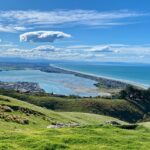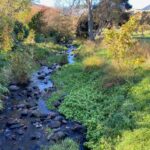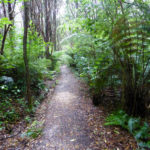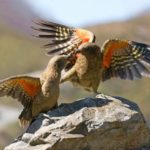Some of Christchurch’s environmental leaders gathered in August 2022 to discuss the critical issues facing our environment in preparation for local elections. Mayoral Candidate David Meates was the special guest. Stories were told of groups around Banks Peninsula and Christchurch working to regenerate the hills, valleys and streams. For example over twenty groups are working […]
NZ Ecology Conference – Reflections
The NZES conference is the yearly gathering of the ‘ecology whanau’, It was great to be part of this gathering last November and this was the piece I wrote for NZES newsletter.
It’s a time to catch up with colleagues, hear what insights and discoveries have been made over the last year and to welcome new ecologists into the fold. NZES does these things well with the right mix of gravitas and humour.
Canterbury University venue, and the local organisers choice in SouthEvents as conference managers for the NZES 2015 conference, provided what all good conferences need: a stimulating and wide ranging programme of field trips and workshops (great idea to put these at the start); talks; posters; excellent food; friendly helpers and close proximity between theatres and spill out areas (including into sunshine) that facilitate discussion over lunch.
No overall theme was set for the conference this year. However, the first day’s plenary symposium on the contribution of non-governmental initiatives to conservation became along with citizen science, a de facto theme.
The challenge for the ecologists was how to work collaboratively with these initiatives for mutual benefit. As Myfanwy Emeny (WCC) found when interviewing those who participated in the Great Kereru Count, citizens don’t want engagement they want to contribute to meaningful scientific research.
 It is great when at least one speaker at a conference introduces you to a whole new perspective and the person who came closest to that for me was Peter Kareiva, beamed in from the US via Skype (bravo to the organizers for taking this risk). Peter’s examples of how the Nature Conservancy (40 countries, 1500 scientists) made a difference in changing plans for mining in Mongolia, fishing practices in marine sanctuaries around the US east coast and SNAP (science for nature and people) whereby a group of scientists are brought together to solve a specific urgent problem, lifted my spirits considerably.
It is great when at least one speaker at a conference introduces you to a whole new perspective and the person who came closest to that for me was Peter Kareiva, beamed in from the US via Skype (bravo to the organizers for taking this risk). Peter’s examples of how the Nature Conservancy (40 countries, 1500 scientists) made a difference in changing plans for mining in Mongolia, fishing practices in marine sanctuaries around the US east coast and SNAP (science for nature and people) whereby a group of scientists are brought together to solve a specific urgent problem, lifted my spirits considerably.
Long term data sets are gold: Susan Walker using Birds NZ Atlas data found over 25 years that forests have been emptied of birds and similarly the decline in waders in the inland basins; Jon Sullivan using Brian Patrick’s 45 years of moth collecting also demonstrates significant loss.
What a surprise to learn from Jamie Wood that kiore ate moa! Expanded interviews of these and more highlights from the conference are found in Alison Balance’s interviews on Our Changing World
What I missed in this conference was vigorous debate – could these have been scheduled for plenaries at day’s end – topics such as: pest control & 1080 (e.g. after the excellent day devoted to 1080); our water quality crisis; science funding & loss of democracy. This year I’ve written many environmental submissions and would have loved to hear some controversial issues thrashed out to help with next year’s round!
Spreading the word – I was almost tempted to become a Tweeter after the great promotion of this in the last NZES newsletter but when I went searching for what was posted during NZES conference I needed help.
Ian Lunt (writing after the Australian Ecological Society conference) says that curating tweets is the way to go See more on this here . Here Storify was used to curate more that 130 tweets from the plenary titled Gender Equity in Ecology: Because its 2015. This curated post was viewed nearly 1,400 times and I was one of these viewers!
To conclude the Canterbury group deserves accolades for a wonderful conference and I loved ‘the lure’ of the Waikato group when describing next year’s gathering. I came away appreciating anew the fellowship and skills of my ‘ecology whanau’ and inspired to keep recording and noticing nature while speaking out about environmental concerns – viva nzes!





Leave a Reply